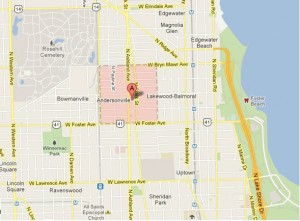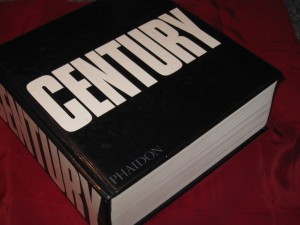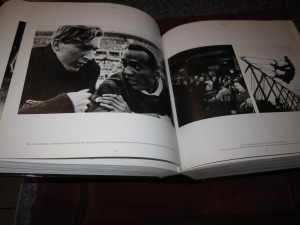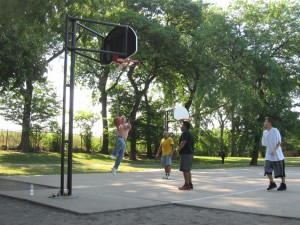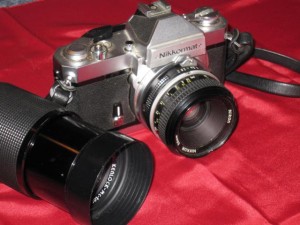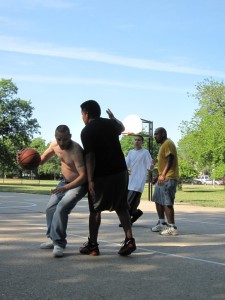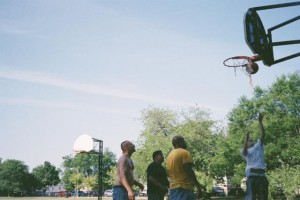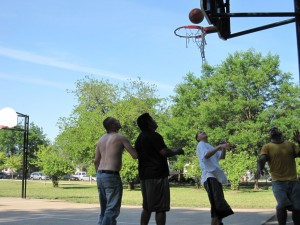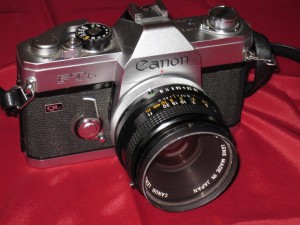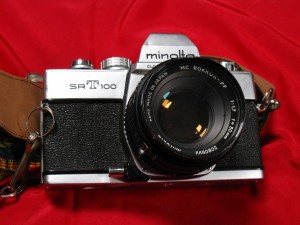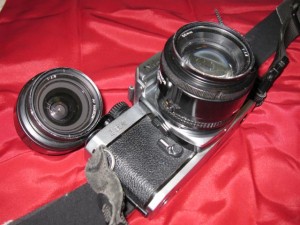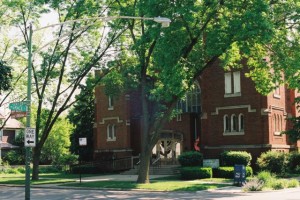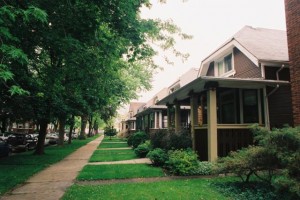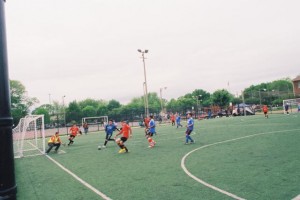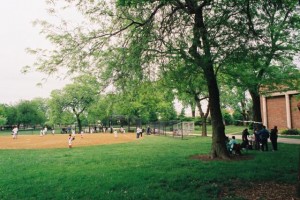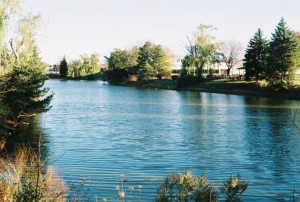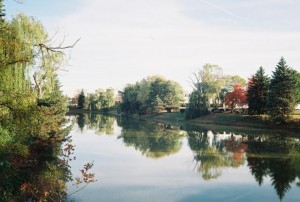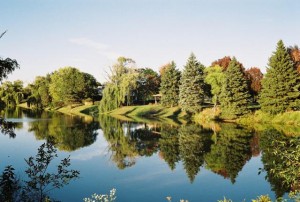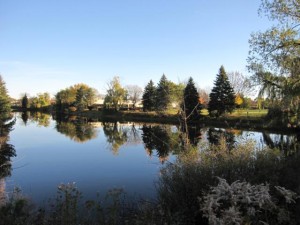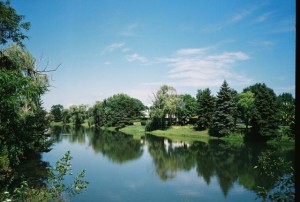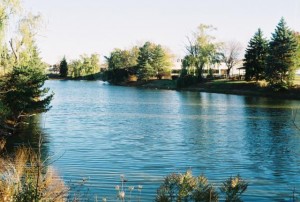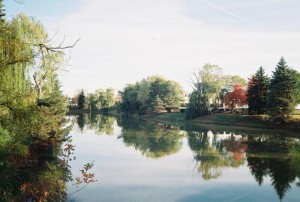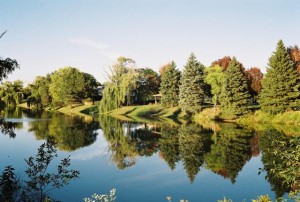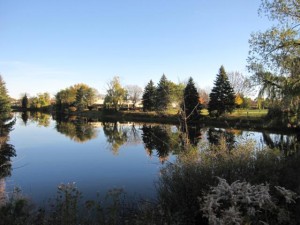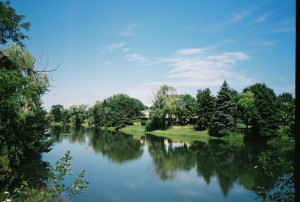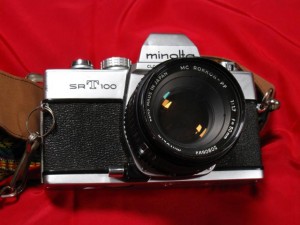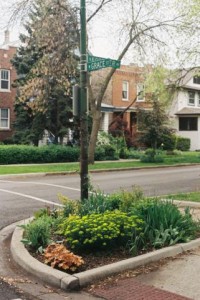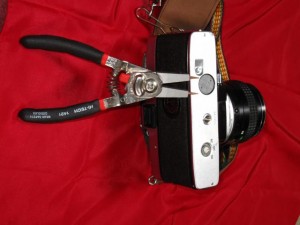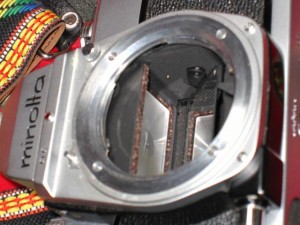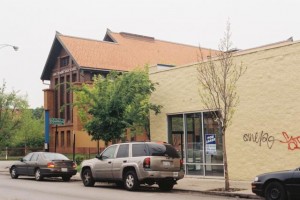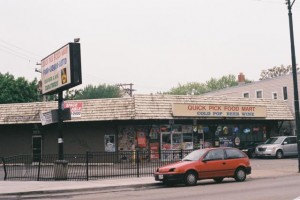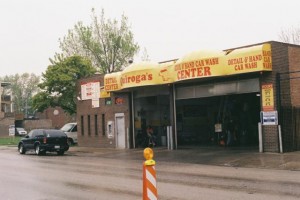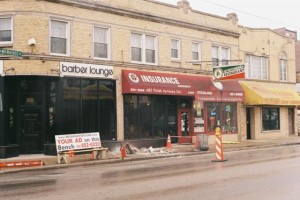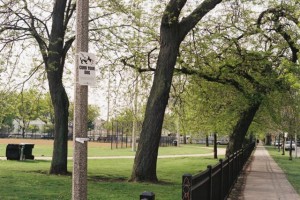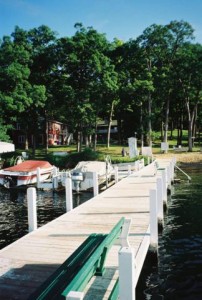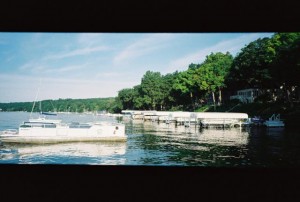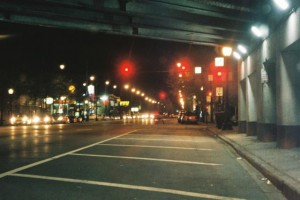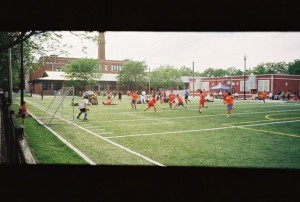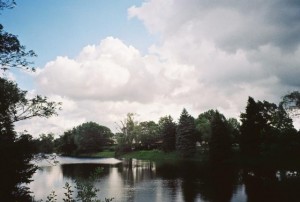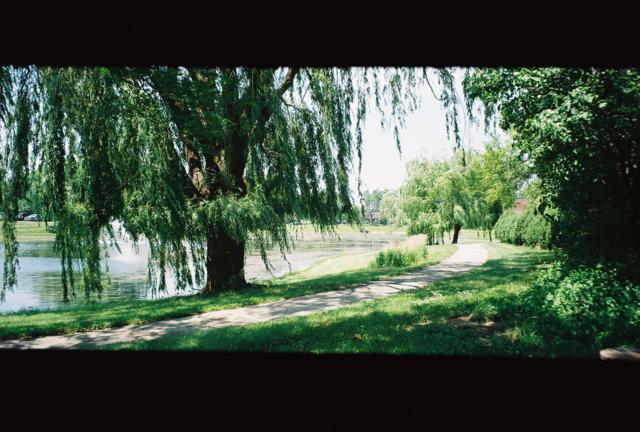This will be a longer post, a very long post. But if you enjoy a good story about a fine old camera, sit back and enjoy my blog article today about a 40+ year old Canon QL17 from Saigon.
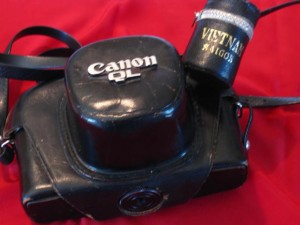
Canon QL 17, Saigon, in Case
I was always mad at myself for failing to even make an eBay bid on a Vietnam war photographer’s camera, an SRT 101. Then almost by accident, I acquired a Canon QL17 camera from Saigon, Vietnam.
I was curious when I saw 3 cameras sold on eBay for parts. One of the cameras was a Canon QL17 and it looked relatively clean. In the closing minutes I bid a whopping 5 dollars maximum in hopes of winning a decent camera. I won the auction and purchased 3 cameras for $2.50 plus shipping.
They arrived in the email. The three cameras were a Honeywell Spotmatic with 1.9 50mm Vivitar lens, a strange Aka Relle scremount lens camera, and a Canon QL17. I checked out the Spotmatic (undependable shutter at slow speeds but decent otherwise). The Aka Relle camera seems to have problems with its film advance. Sometimes it works if you jiggle a lever, sometimes it doesn’t work. Then I examined the Canon QL17 last. I wanted to savor the Canon QL17.
Initial Impressions of my Canon QL17
The Canon QL17 was clean. Body clean, lens clean, battery chamber clean. Popped the film back open and it even looked as if someone tried to put new seals into the camera.
- Lens. This Canon rangefinder comes with a 1.7 45mm lens. No scratches or fingerprints. It also came without a filter so it’s perhaps a small miracle its traveled 40 years without being scratched or harmed.
- Body. When this eBay purchase arrived, the body looked good. Upon further examination, it’s almost new. On old cameras you will normally find scratches on the bottom of the camera, no scratches.
- Shutter speeds. The shutter clicks but the shutter diaphragm doesn’t open. That normally means their too much accumulated oil on the diaphragm. But upon arrival, I couldn’t say for sure if the shutter speeds were working correctly.
- Aperture. Again, the shutter diaphragm doesn’t open so even if I set different apertures, I can’t determine if its working. On an SLR you can adjust the aperture of a lens and determine if it’s “kind of” working. With a rangefinder you cannot. This shutter diaphragm has “oil”.
- Film advance. A Canon QL camera has a great method for loading film. The QL or Quick Loading system is an easier method for loading film. A spring tensioned plate pressures your film when you close the back of the camera. Trust me, it’s just easier to load.
- View finder. Yellowish. Everything was a bit yellow when I looked through the viewfinder.
- Battery chamber. No battery but at least the battery chamber was in good shape, no sign of battery acid.
- Light meter. The camera’s light meter came to life with a new battery. Whether it’s accurate or not I cannot say. I’ll shoot a roll of film to test it.
This camera cost less than a dollar on eBay. Actually it cost 42 cents plus shipping. Total price was about $5.35 with shipping included.
Provenance – My Canon QL17 came from Saigon, Vietnam
I was half interested in repairing the camera (or more correctly, paying someone to repair it) and then I noticed something. Like a lot of older cameras, this camera had a shoulder strap with an empty film canister attached to the strap. The film canister was marked “Saigon, Vietnam”. The story of this camera became clear. I can’t prove it but I believe this camera was made in Japan around 1970 and then sold in Saigon, Vietnam. Most likely, very most likely, an American serviceman purchased this camera in Saigon and photographed the world that he saw in southeast Asia during the Vietnam War.
I will never know who really owned this camera. But here is this camera’s known journey.
- Made in Japan.
- Purchased most likely in Saigon, Vietnam during the Vietnam War. It would be very unlikely for someone to purchase a camera in California with a strap that had a film canister marked “Saigon, Vietnam”.
- Valley Springs, California. I purchased the camera on eBay from a vendor in California.
- Chicago, IL. This is the Canon QL17’s new home.
A Side Trip to Des Plaines, IL
Once I learned (or believed I learned) that my Canon QL17 traveled through Saigon, Vietnam, I decided to take it to Lee’s Camera Repair in Des Plaines, IL, for a repair estimate. The following Saturday I drove from Chicago past Park Ridge into Des Plaines and showed my camera to Mr. Lee. He is a man of few words.
He looked at the camera and said, “Oil.” Now the camera is at his shop in Des Plaines, IL, getting a CLA (clean, lube, and adjustment) for $60. He’ll clean up the cloudy viewfinder and clean the “oil” off the blades. He was so excited looking at my camera that he moved faster than I’ve ever seen him almost jumping to his batteries on the wall to find a battery and test the camera’s meter.
I think Mr. Lee liked my camera.
The last time Mr. Lee fixed one of my cameras it was a Yashica 1000 that couldn’t advance film. His workmanship on my Yashica 1000 was glorious.
Special Thanks to my Wife
My bride of over 25 years thought $60 was a bit much to repair a camera. I agreed. Without her, collecting cameras would be pointless. Honey, thanks for my birthday gift.
I Own Three Canon QL Cameras
I own three of these cameras: The Reconditioned Canon QL, the Mt. Pulaski $10 special, and the $1 Canon QL from Saigon, Vietnam.
My First Canon QL17
I purchased a CLA’d Canon QL17 from a camera store two years ago. I only shot one roll of film with it even though it cost me $125 during the summer of 2010. When I realized I was spending too much on cameras I paid $20 a week on the camera in an effort to slow down my purchases. Well, it slowed me down a little. Here is a dazzling photo from my 1st Canon QL17 (not the Saigon camera).
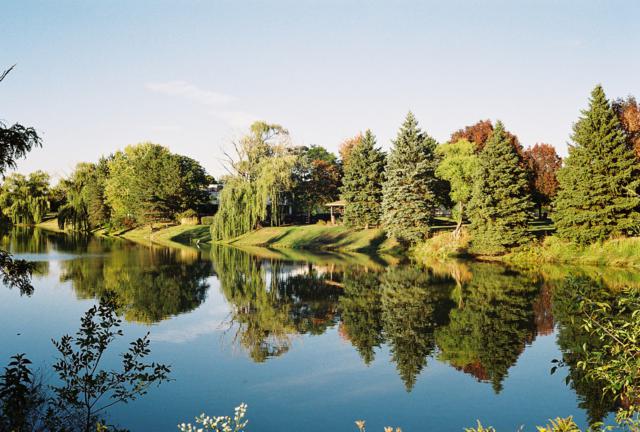
Canon QL 17, Pond Reflections at Dusk
The Mount Pulaski Canon QL17
The Mount Pulaski Canon QL17 was purchased during the summer of 2011 at a garage sale in that tiny town in central Illinois (by the way, I love Mt. Pulaski). Let’s just say my wife was driving with me when she said, “Turn here by the brick homes.” I found one garage sale and they had no cameras. But I asked if they had a camera inside. They disappeared into the house and returned with a very warm camera case marked Canon that must have been in the attic. I told them if fixed up and tested, it might sell for $75 on eBay. I offered $10 and they accepted my offer (I think they liked me).
The Vietnam Canon QL17
On March 23, 2012 towards the end of an eBay auction I saw 3 cameras on sale for one dollar. They were being sold for parts. From this photo I decided it was a Canon QL17. Sorry, it’s not a great photo.
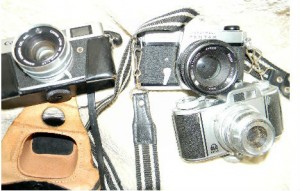
eBay Trio
I bid a whopping $5 but won the auction with a bid of $1.25. My Vietnam Canon QL17 was purchased for 42 cents. If you count the shipping, the camera cost about $5.35. And now…the camera is back from Lee’s Camera Repair of Des Plaines, IL and its beautiful.
Mr. Lee’s Camera Repair of Des Plaines, IL – My 40 Year Old Camera is Like New
This Friday at work someone called my phone. It was an Asian woman asking for “Richie”. Then I realized, it’s Lee’s Camera Repair. She was calling to say my camera was ready.
In Friday’s evening rush hour I drove from Oakbrook Terrace, IL to Des Plaines, IL just to pick up a 40 year old camera. When I arrived it was only the elderly Asian lady (Mrs. Lee?) in the store. I walked into the store, said hello, said my name was “Ritchie”. She turned away, told the barking dog to be quiet, and found my camera.
- Viewfinder? As clear as it was 40 years ago.
- Oily diaphragm shutter? The shutter worked perfectly. I can only believe Mr. Lee removed the oil.
- New seals? The original Canon QL17 used tiny foam. Mr. Lee used some type of thick, twisted thread in the tiny crevices of the camera. I have read the German Praktica cameras used that technique.
- Battery? Mr. Lee had tossed in a battery for free. The meter worked just fine and responded to light.
I purchased a $5 clear filter to protect the lens while I was in the shop. I told the elderly Asian lady the camera was a birthday gift for me. She smiled and I said good-bye.
Canon QL17 Review – Technical Details
I know that visitors want specs, but I’m not a spec kind of guy. Neither am I willing to steal somebody else’s work off the Internet. So if you want terrific detail on specifications go to the Butkus manuals. But for now, here are my simple technical details.
- Produced. Production began March, 1965.
- Camera type. 35mm rangefinder.
- Lens. 45mm, f/1.7.
- Shutter. B and 1 second to 1/500 of a second.
- Film Speed Scale. ASA 25-400.
- Exposure Meter. Built in using CdS photocell with shutter priority.
- Film Loading. The wonderful Canon QL (Quick Loading) method for loading film. You will enjoy it.
My Repairs for the Canon QL17
As described before, this camera had three known faults after close inspection.
- Oil on the shutter diaphragm caused the shutter to malfunction. You cannot take a film photo unless the “eye” of the camera dilates to let light into the camera.
- Yellowish viewfinder.
- Interior seals on the camera were crumbling a bit.
$60 to Mr. Lee of Lee’s Camera in Des Plaines, IL repaired the camera. Thanks Mr. Lee.
Canon QL17 Battery
This is another mercury battery you can’t purchase in the United States anymore. I hear rumors that you can buy mercury camera batteries in Canada.
Try a 1.35 volt zinc-air battery to replace the mercury battery used in the Canon QL17. Or better still, consider purchasing a light meter.
How does the Canon QL17 feel?
This is a heavy camera. I find putting the strap around my neck with the camera in front of my chest. I support the camera with one hand as I walk along. It’s hard to imagine if a U.S. soldier carried this in his backpack. But I’m glad it’s mine, glad I had it repaired.
Nice features of the Canon QL17.
- Solid and heavy. Yes, I’ve used that phrase before to describe other cameras. But for a 30 minute walk in Chicago I don’t mind carrying the Canon QL17. But you’ll need to love this camera to carry it long distances.
- Feels good. Yes, it feels good when you shoot it. It is incredibly quiet.
- Canon QL. I had to learn how to load film all over again when I took up film cameras after a two decade hiatus. But the Canon QL (Quick Loading) contraption makes a lot of sense. The film almost loads itself.
Problems? Yes.
- Battery problem. This camera was built around a mercury battery. That’s now against the law in the United States. Finding a replacement that gives you the same voltage will be a problem. But perhaps finding the correct battery is worth it to use this fine camera. This seems to be the correct replacement for the mercury battery, this is a Wein MRB625 1.35v Zinc-Air battery.
- Focusing. I normally shoot at the infinity setting but when trying to focus at shorter distances (a flower, perhaps’s someone’s face), I wasn’t quite convinced I had focused correctly. I tend to shoot at smaller apertures like F16 in hopes of getting depth of field and minimizing any focusing problems I might experience. I also found myself using the feet estimator as I focused.
- Big Lens in Viewfinder. I began noticing that in the viewfinder I was seeing the big lens. Not a problem for me, perhaps an aesthetic problem for you.
Good or bad? In automatic mode you see the aperture in the viewfinder, not the shutter speed. If you’re like me, you’ll use the automatic metering and not realize you’re taking a 1/4 of a second shutter speed shot in early evening. Normally you don’t dare take many shots at 1/15 much less 1/4 of a second. But there’s very little camera shake with this Canon QL17. We’ll see if my hand held shots at 1/4 come out nicely.
Canon QL17 Sample Photos from Starved Rock State Park, Illinois
For my birthday my wife and I stayed at the Starved Rock State Park in Illinois. Naturally I took my birthday present with me: a newly CLA’d Canon QL17. We visited Utica, IL, Starved Rock State Park, Matthiessen State Park, and Ottawa, IL.
Starved Rock is an Illinois State Park located across the river from Utica, IL. Here’s a good scenic view from Starved Rock itself overlooking the Illinois River. I especially like the fishing boat near the bottom right hand corner.

Canon QL 17 Saigon, Best Starved Rock Landscape Photo
I loaded ASA 200 speed color film into the Canon rangefinder at Duffy’s Tavern in Utica, IL. Dawn the waitress came over to admire the old camera. Always nice making friends with old cameras.But something was wrong with my film loading. It didn’t “feel” right as I advanced it. It wasn’t smooth like my other Canon rangefinders. In the dark shade of a trail in Starved Rock State Park I re-loaded the film. Sure enough, the film wasn’t loaded correctly the first time. The second time I think I succeeded in loading the film properly.
This Canon rangefinder is very quiet in use and has very little camera shake. That’s why I dared to take this photo at night of a lighted bridge at night by the Starved Rock Lodge. I used my Gossen Digisix to meter the darkness and took my photo. Considering its hand held at night with ASA 200 speed film, I think it came out decently.
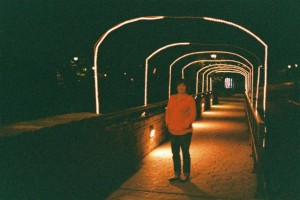
Canon QL 17 Saigon, Woman at Starved Rock at Night
Canon QL17 Review – Summary
The first Canon QL17 was produced in 1965. Potentially my new yet old camera may be 47 years old. You can visit its “official” write-up at the Canon Camera Museum.
This camera has had an epic journey from Japan to Vietnam to California, USA to Chicago, IL, USA. And now this camera has had a long, “epic” blog post.
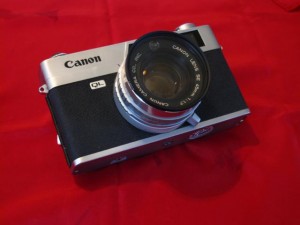
Canon QL 17, Saigon, without Case
Although I like the history of this camera I am not sure I would make this my “go to” rangefinder. It is especially heavy. And, you will find that trying to focus properly at mid-range objects with this camera may be difficult. This camera may be best for photos with the lens set to infinity. Shoot landscapes happily but don’t count on this camera for great family portraits.
Thanks for reading my Canon QL17 review today. In this blog post I described a Canon QL17 camera from Saigon, Vietnam. More importantly, for the U.S. serviceman who I believe once owned this camera, “Thank you for your service.”
Thanks for visiting What is a Film Camera today.

